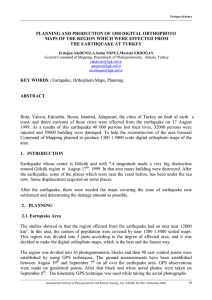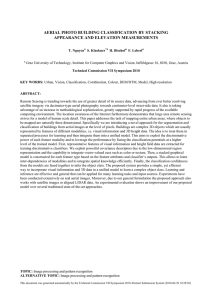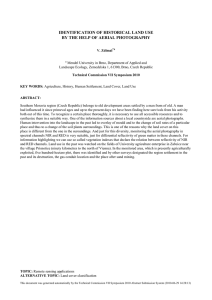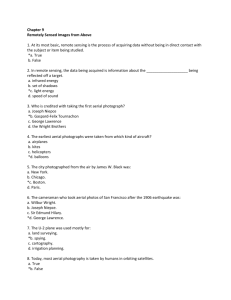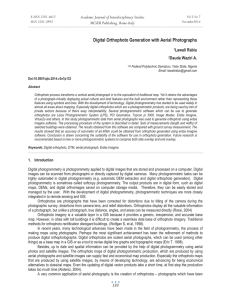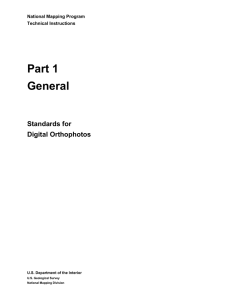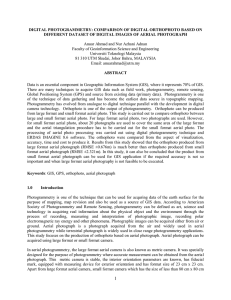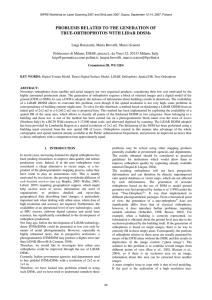A HIGH QUALITY DIGITAL ORTHOPHOTO OF THE MT. EVEREST
advertisement
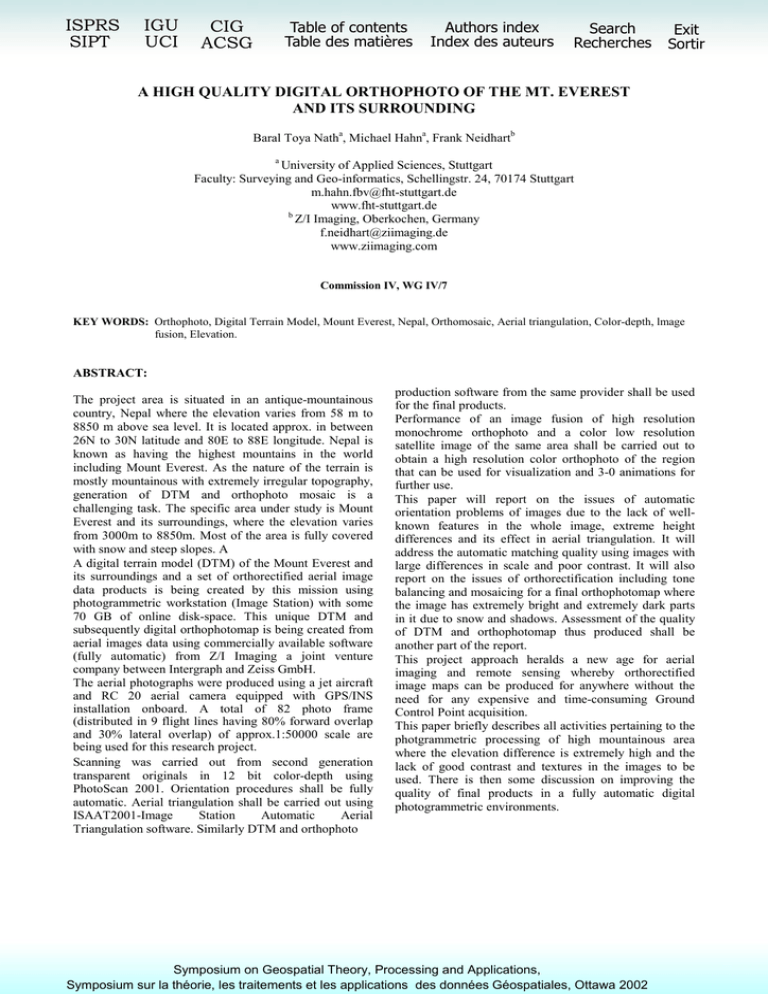
ISPRS SIPT IGU UCI CIG ACSG Table of contents Table des matières Authors index Index des auteurs Search Recherches Exit Sortir A HIGH QUALITY DIGITAL ORTHOPHOTO OF THE MT. EVEREST AND ITS SURROUNDING Baral Toya Natha, Michael Hahna, Frank Neidhartb a University of Applied Sciences, Stuttgart Faculty: Surveying and Geo-informatics, Schellingstr. 24, 70174 Stuttgart m.hahn.fbv@fht-stuttgart.de www.fht-stuttgart.de b Z/I Imaging, Oberkochen, Germany f.neidhart@ziimaging.de www.ziimaging.com Commission IV, WG IV/7 KEY WORDS: Orthophoto, Digital Terrain Model, Mount Everest, Nepal, Orthomosaic, Aerial triangulation, Color-depth, lmage fusion, Elevation. ABSTRACT: The project area is situated in an antique-mountainous country, Nepal where the elevation varies from 58 m to 8850 m above sea level. It is located approx. in between 26N to 30N latitude and 80E to 88E longitude. Nepal is known as having the highest mountains in the world including Mount Everest. As the nature of the terrain is mostly mountainous with extremely irregular topography, generation of DTM and orthophoto mosaic is a challenging task. The specific area under study is Mount Everest and its surroundings, where the elevation varies from 3000m to 8850m. Most of the area is fully covered with snow and steep slopes. A A digital terrain model (DTM) of the Mount Everest and its surroundings and a set of orthorectified aerial image data products is being created by this mission using photogrammetric workstation (Image Station) with some 70 GB of online disk-space. This unique DTM and subsequently digital orthophotomap is being created from aerial images data using commercially available software (fully automatic) from Z/I Imaging a joint venture company between Intergraph and Zeiss GmbH. The aerial photographs were produced using a jet aircraft and RC 20 aerial camera equipped with GPS/INS installation onboard. A total of 82 photo frame (distributed in 9 flight lines having 80% forward overlap and 30% lateral overlap) of approx.1:50000 scale are being used for this research project. Scanning was carried out from second generation transparent originals in 12 bit color-depth using PhotoScan 2001. Orientation procedures shall be fully automatic. Aerial triangulation shall be carried out using ISAAT2001-Image Station Automatic Aerial Triangulation software. Similarly DTM and orthophoto production software from the same provider shall be used for the final products. Performance of an image fusion of high resolution monochrome orthophoto and a color low resolution satellite image of the same area shall be carried out to obtain a high resolution color orthophoto of the region that can be used for visualization and 3-0 animations for further use. This paper will report on the issues of automatic orientation problems of images due to the lack of wellknown features in the whole image, extreme height differences and its effect in aerial triangulation. It will address the automatic matching quality using images with large differences in scale and poor contrast. It will also report on the issues of orthorectification including tone balancing and mosaicing for a final orthophotomap where the image has extremely bright and extremely dark parts in it due to snow and shadows. Assessment of the quality of DTM and orthophotomap thus produced shall be another part of the report. This project approach heralds a new age for aerial imaging and remote sensing whereby orthorectified image maps can be produced for anywhere without the need for any expensive and time-consuming Ground Control Point acquisition. This paper briefly describes all activities pertaining to the photgrammetric processing of high mountainous area where the elevation difference is extremely high and the lack of good contrast and textures in the images to be used. There is then some discussion on improving the quality of final products in a fully automatic digital photogrammetric environments. Symposium on Geospatial Theory, Processing and Applications, Symposium sur la théorie, les traitements et les applications des données Géospatiales, Ottawa 2002
